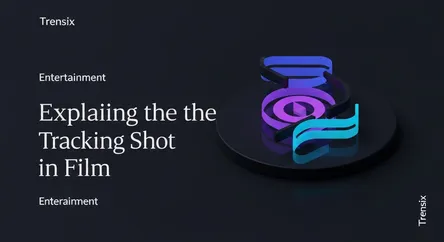Entertainment
Explaining the Tracking Shot in Film

Discover the tracking shot, a dynamic camera technique that moves with the action to immerse viewers and enhance storytelling in movies.
What is it?
A tracking shot, also known as a dolly shot, is a fundamental filmmaking technique where the camera moves alongside the subjects it is recording. Unlike a pan or tilt where the camera stays in one place, a tracking shot physically moves through the scene. This is often accomplished by mounting the camera on a wheeled cart called a dolly, which runs on tracks, but can also be achieved with a Steadicam, gimbal, or even handheld for a different effect. The goal is to follow a character or object smoothly, creating a dynamic and fluid perspective for the audience.
Why is it trending?
While a classic technique, the tracking shot continually trends due to its use in creating highly immersive and technically impressive sequences. Directors like Sam Mendes in '1917' and Alfonso Cuarón in 'Children of Men' have famously used long, elaborate tracking shots (often called 'oners') to create a seamless, real-time experience. These shots generate significant buzz for their complexity and storytelling power, showcasing directorial vision and pushing the boundaries of cinematography. They are a powerful tool for creating memorable, uninterrupted scenes that captivate audiences.
How does it affect people?
The tracking shot profoundly impacts the viewing experience. By moving the audience through the space with the characters, it creates a strong sense of presence and immersion, making the viewer feel like a participant rather than a passive observer. This technique can build suspense by following a character into a dangerous situation, reveal crucial plot details as the camera explores an environment, or heighten emotional connection by staying close to a character during a pivotal moment. It transforms the cinematic space into a living, breathing world for the audience to explore.